Some of the links in this post may be affiliate links.
Do you have a dying Philodendron Selloum and want to know how to revive it? I’ll go through how I rehabbed a plant that I rescued, as well as describe general care information for this plant in order to keep it in good shape!
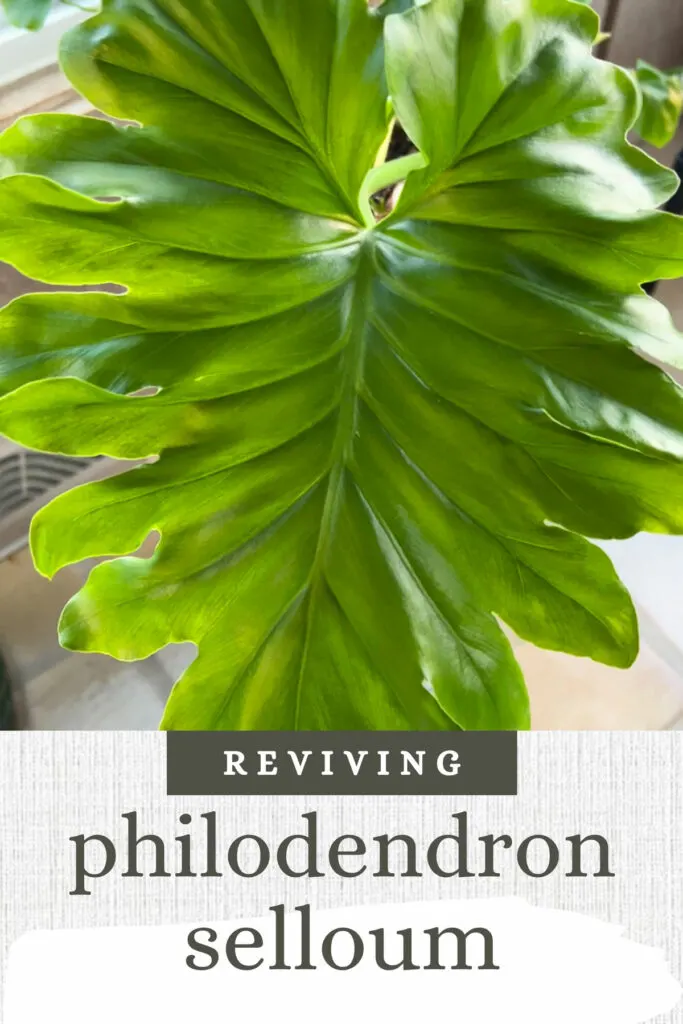
Table of Contents
Thaumatophyllum bipinnatifidum Common Name
The scientific name for this plant is Thaumatophyllum bipinnatifidum, but it goes by many common names including:
- Philodendron Selloum
- Philodendron ‘Hope’
- Tree Philodendron
- Split Leaf Philodendron
- Lacy Tree Philodendron
The botanical name of this plant used to be Philodendron bipinnatifidum, but it was later classified into a new genus, Thaumatophyllum and is now known as Thaumatophyllum bipinnatifidum.
HOW TO REVIVE A DYING SELLOUM
I’d like to show you the transformation of my own plant that I rescued. It was previously living in very poor conditions (low light and dry soil).
Here is what it looked like before I started to rehab it.
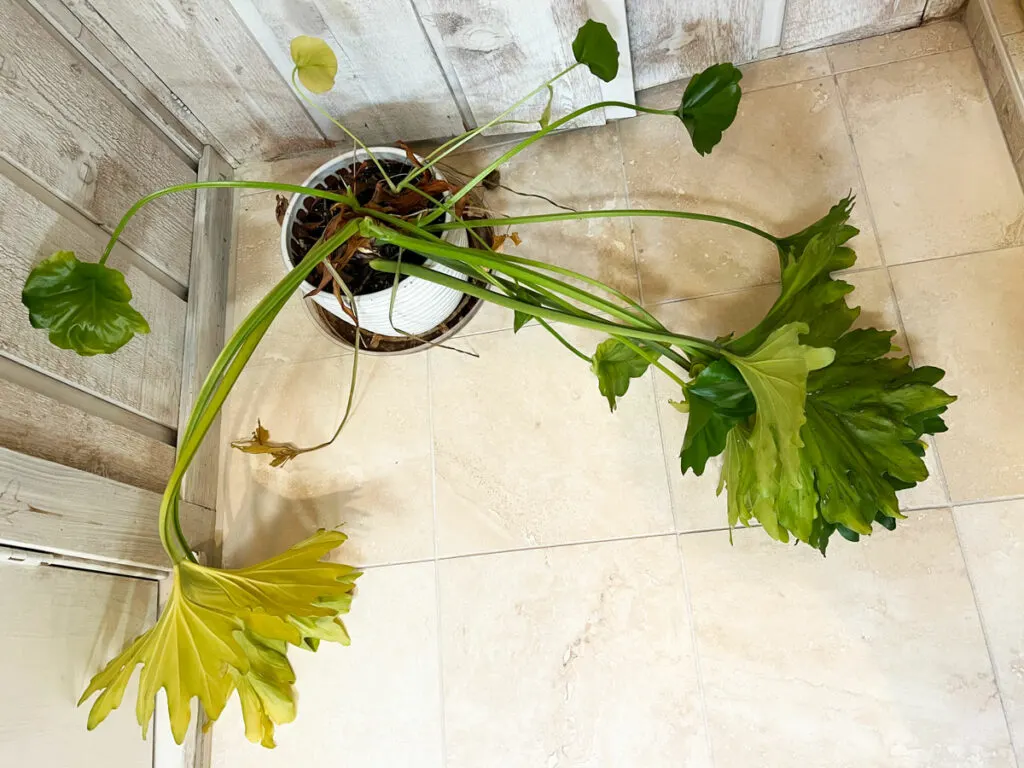
The plant was sitting in a very dark location very far from a window, and had been neglected and living in very dry soil.
You can see that the yellow leaves, overall droopy appearance of the plant, and the floppy petioles.
The first thing I did was to remove all of the ugly leaves and petioles. The petioles snapped right off the trunk. You can see the leaf scars on the trunk in the photo below.
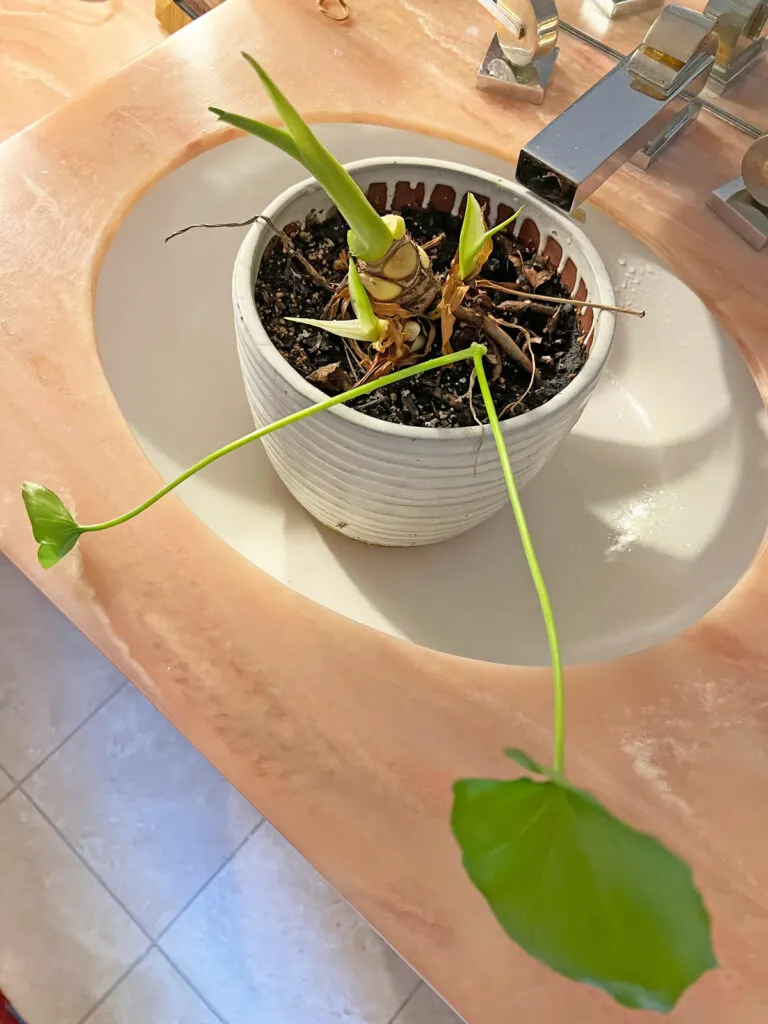
At this point, I just moved it right in front of an Eastern facing window and was attentive to its care, and the plant quickly responded with fresh, vigorous new growth.
Just one week later, take a look at the new growth starting to form.
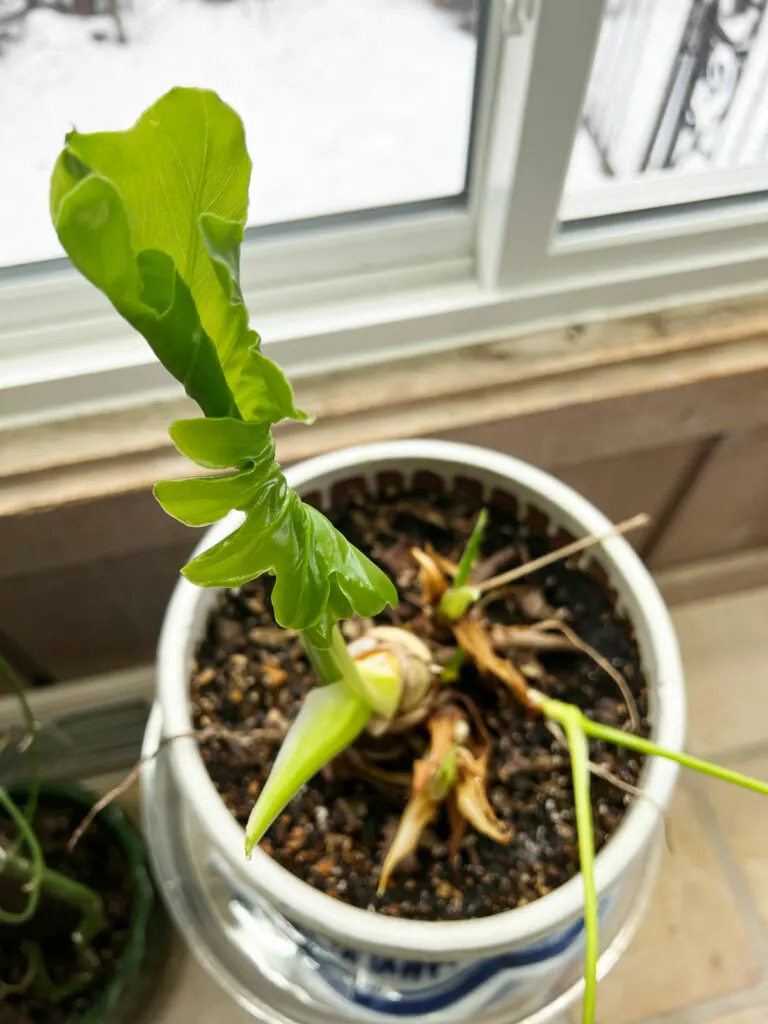
Less than a month after starting to revive the plant, the first new leaf opened up.
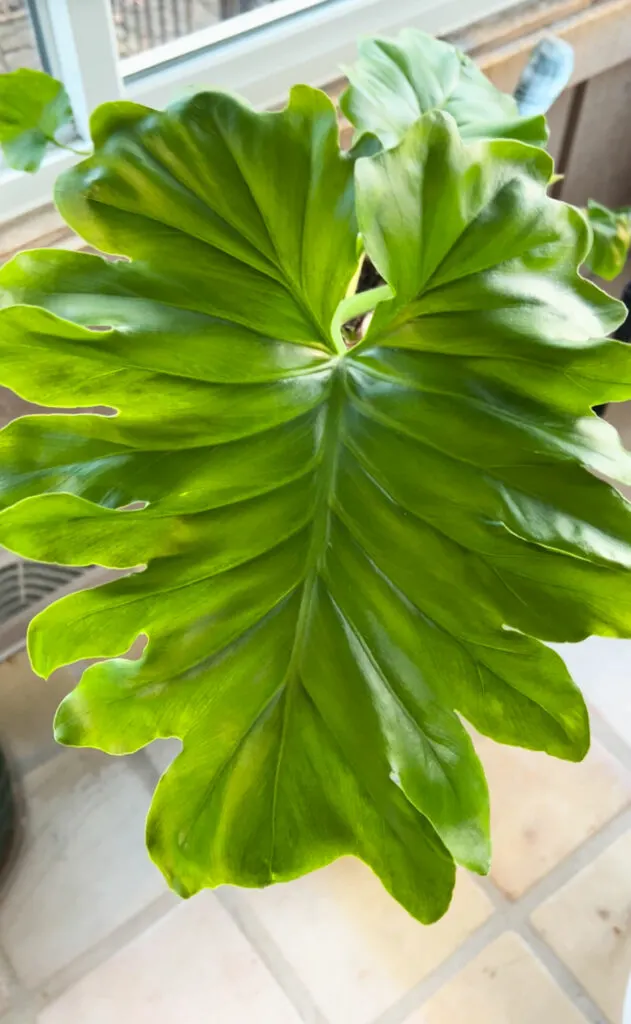
PHILODENDRON HOPE SELLOUM CARE
This native of South America can get quite large in the home, so be sure that you have the room otherwise, under good care, you’ll be forced to give it away!
LIGHT
These are not low light plants by any means. Throughout my travels, I’ve seen these growing in many warm climates in sunny areas outdoors.
This means that indoors, where our light is much weaker than outdoors, you can provide this plant with as much light as you can.
This is not to say that this plant won’t grow well with no sun, but for best results, try and provide your plant with at least 2-3 hours of direct sun indoors (if not more) for best growth.
Situate your plant directly in front of a bright window.
WATERING
This plant prefers fairly moist soil, but make sure to allow the top 1-2 inches of potting mix to dry out before watering again. Use your finger to judge the moisture level.
I don’t recommend using soil moisture meters as many are notoriously faulty.
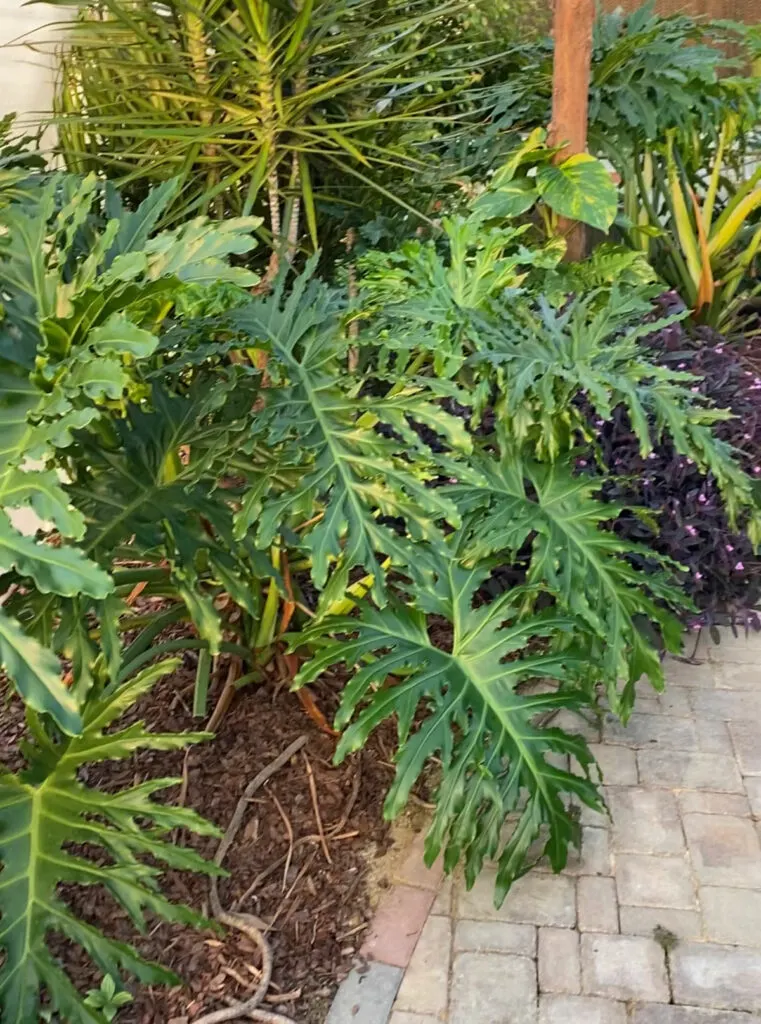
SOIL
Any well drained potting mix will do. Like any aroid, these plants need a nicely draining mix. You can amend your all purpose potting mix with perlite in order to increase drainage.
2-3 parts of an all purpose potting mix with 1 part perlite will do. You can also mix in some orchid bark as well if you’d like.
If you’re looking for an amazing potting mix that you can use straight out of the bag for your Thaumatophyllum, check out the Rainforest Soil Blend from Oh Happy Plants. This is an amazing mix and you will get 10% off at checkout automatically if you use my link.
HUMIDITY
Although it is beneficial to increase humidity, this plant will tolerate average indoor humidity.
TEMPERATURE
Try and keep minimum temperatures of 60F (about 15.5C). These plants like it warm!
Keep your plant away from any heating/cooling vents, and avoid any cold drafts from doors opening and closing.
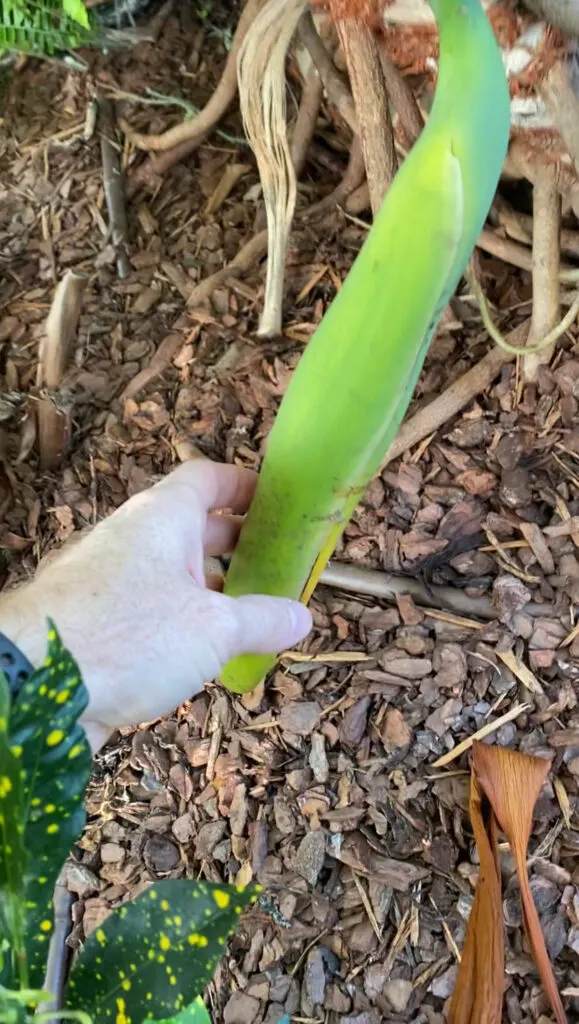
FERTILIZING
These plants can be prone to chlorosis which you can usually tell if the veins on the leaves are darker green but the rest of the leaf is a pale yellowish green color.
Chlorosis is basically the yellowing of leaves due to lack of chlorophyll.
This can happen for many reasons, but one common reason is if your plant has depleted all the nutrients in the soil, and is commonly caused by an iron deficiency.
Usually, using a complete, well-balanced fertilizer that includes chelated iron will help to resolve the issue and help prevent nutrient deficiencies.
Dyna-Gro Grow is an amazing nutritionally complete fertilizer that you can use to help prevent and treat chlorosis, and I use this on all my tropical plants.
Simply use about 1/4-1/2 teaspoon per gallon of water each time you water, and your plants should be in good shape.
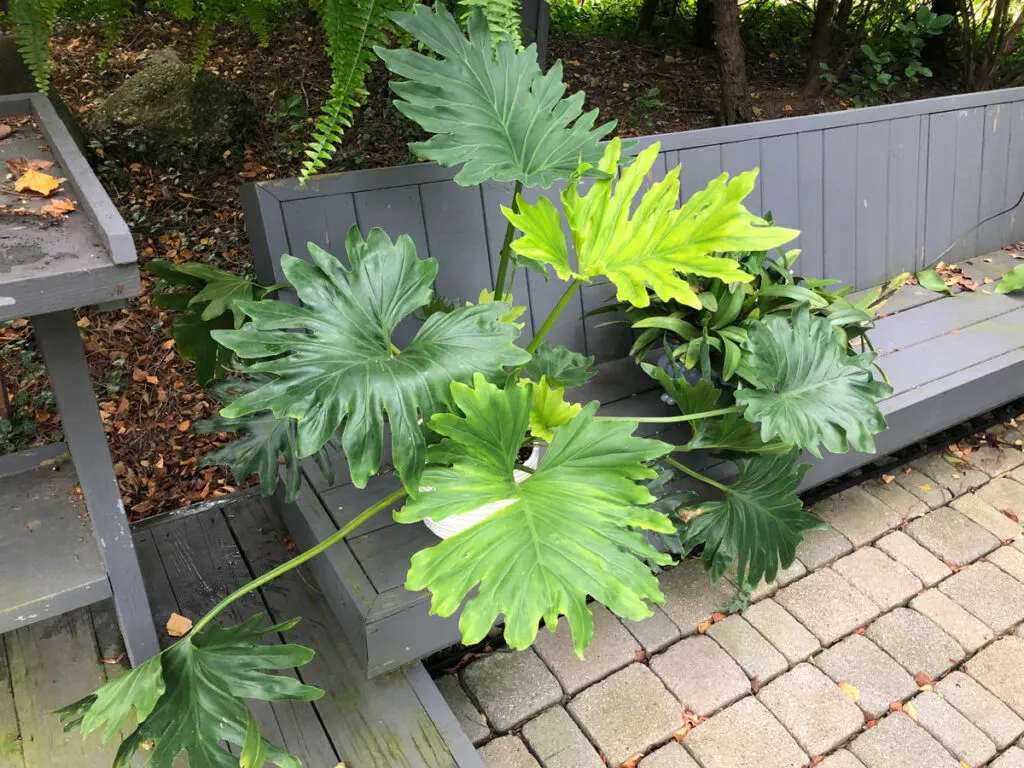
Chlorosis can also be caused by a manganese or zinc deficiency.
Even if you do have the necessary nutrients and iron in the soil, chlorosis can also be caused by soil pH that is too high. In these conditions, even though iron is present, it will not be available for your plant to absorb if pH is too high and alkaline.
Most plants in general prefer to grow in slightly acidic soils (less than a pH of 7), and iron is most available to most plants in pH levels between 5.0 and 6.5.
These plants do not like high salt concentrations in their soil, so be sure to periodically water with plain water (no fertilizer) at least every month or two.
WHAT IS WRONG WITH MY PHILODENDRON SELLOUM?
Why do my leaves not have deep lobes?
The lobes will come with age, and they can also be encouraged to have deeper lobes with higher light.
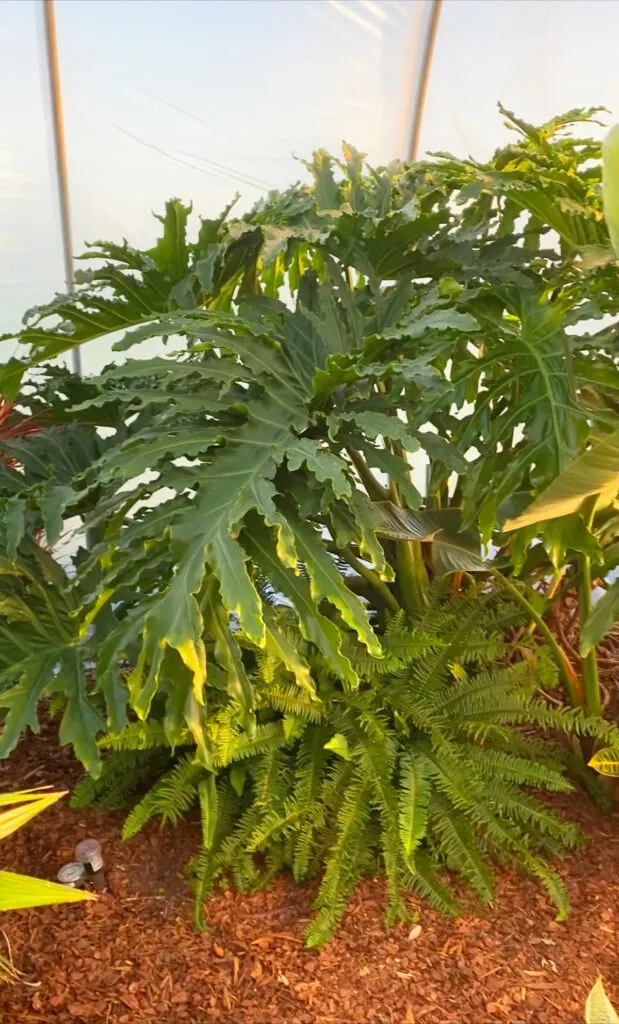
Why is my Selloum drooping?
The leaves and petioles will naturally droop a little, but if you notice excessive drooping, check the soil moisture. Chances are your potting mix may have gone completely dry and needs a good drink of water.
The opposite can also be true. Your plant may have stayed wet for a long time and started to develop root rot.
Why is my Philodendron Selloum turning yellow or pale green?
Yellow leaves have many causes. If your leaves are yellowish but have dark green veins, your plant is probably suffering from chlorosis. Review the causes and treatments of chlorosis earlier in this post.
Yellow leaves are also very commonly caused by soil that has gone too dry (normally the bottom leaves will yellow first).
Yellow leaves can also happen if your soil has stayed wet for too long. Never allow your plant to sit in water (in the saucer, cachepot, etc.) for extended periods of time.
Why are leaves turning brown and curling?
Many factors can cause brown and curling leaves including:
- Too much fertilizer.
- Soil that has gone too dry for too long, or even stayed wet for too long and resulting in root rot.
- Using water that has gone through a water softener that contains sodium.
- Accumulation of fertilizer salts or minerals in the soil (you can flush with plain water to remove excess salts, and you may want to repot with fresh soil).
I hope you’ve enjoyed this post on how to revive a dying selloum!

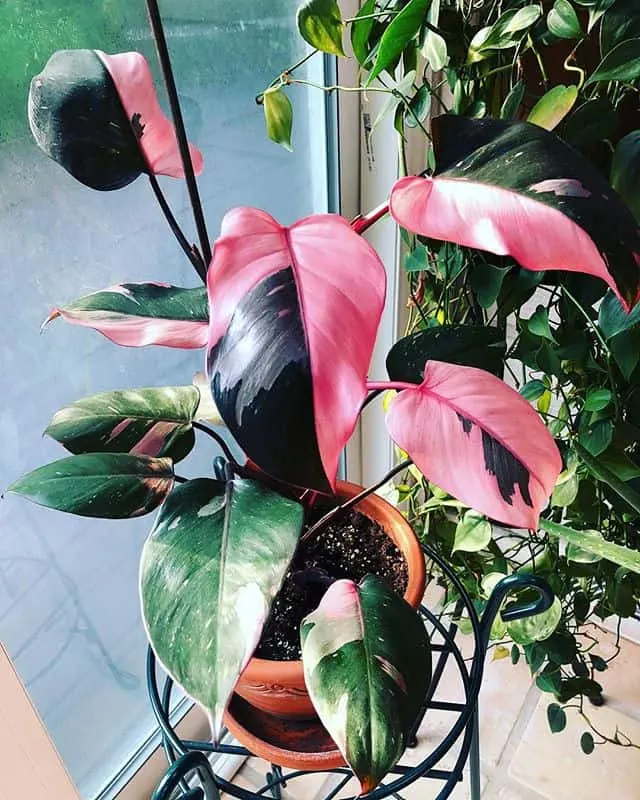
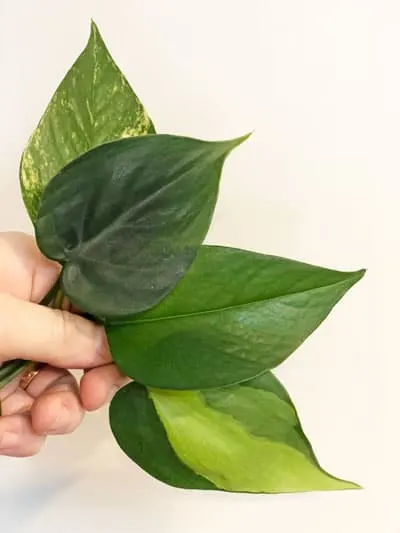
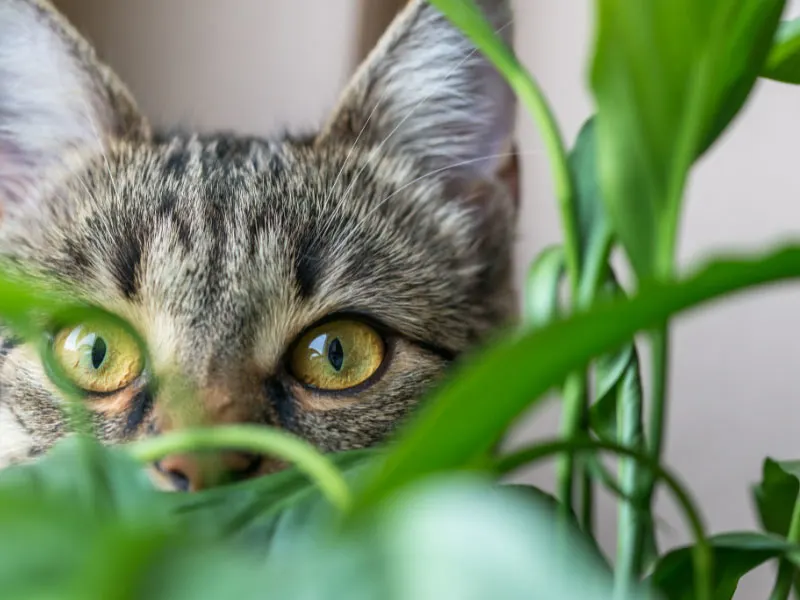
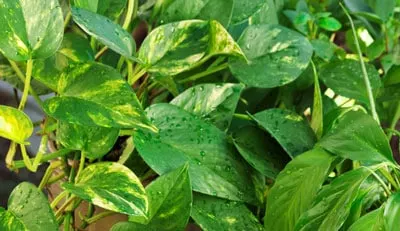
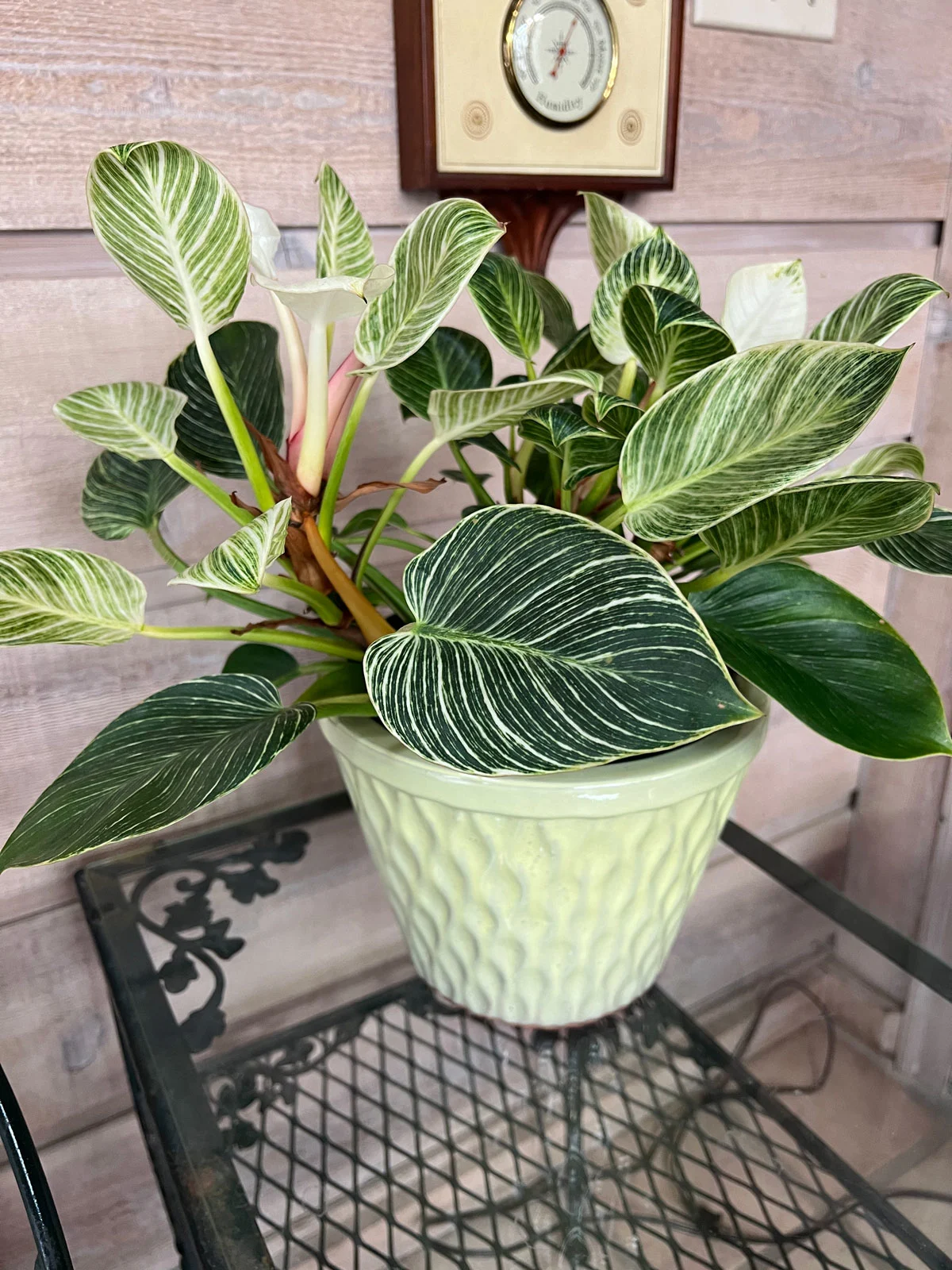
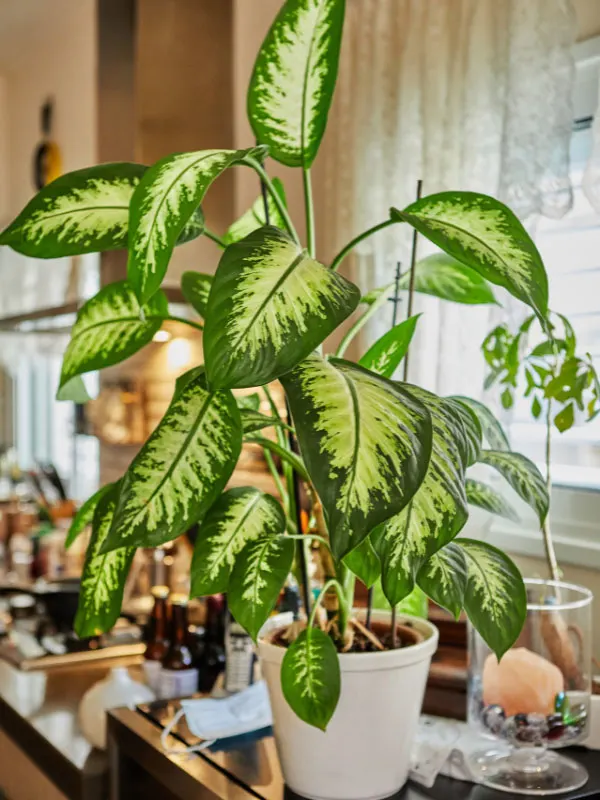
Takarah
Thursday 6th of April 2023
If there is rot in mid neck/bark of my plant, do you think if I cut it off in that region, it will continue to grow?
Raffaele
Thursday 13th of April 2023
It's worth a try. It may spark some growth with pups at the base.